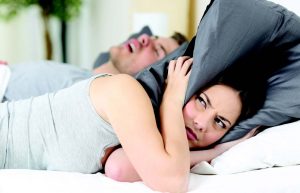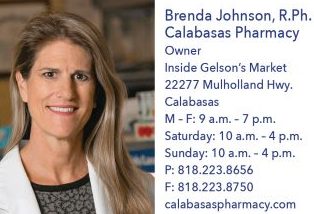Is It Just Snoring or Is It Sleep Apnea?
Snoring isn’t sexy, and sleep apnea is a common and potentially serious disorder. You snore during sleep when airflow from your mouth or nose goes to your lungs, causing the tissues of your throat to vibrate, making a loud, raspy noise. Loud snoring can make it hard for you or your partner to get a good night’s rest. Snoring may point to other medical problems, such as sleep apnea. If you have sleep apnea, your breathing becomes very shallow during sleep or is briefly interrupted in breathing lapses. These lapses usually last about 10 to 15 seconds and can occur up to hundreds of times a night, jolting you out of your natural sleep rhythm. Consequently, you spend more time in light sleep and less time in deep, restorative sleep, which you need in order to be energetic, mentally sharp and productive the next day. Thus, sleep apnea affects both the way you breathe while sleeping and how you function during the day.
Sleep apnea is treatable but often goes undetected. To help ensure that this doesn’t happen, look for the major signs of sleep apnea, which include snoring, breathing pauses and/or choking or gasping sounds. Other common signs of sleep apnea include fighting sleepiness during the day, morning headaches, waking up frequently to urinate and dry mouth/sore throat upon waking.

A physician is needed to properly diagnose sleep apnea using a diagnostic test called polysomnography, which is an overnight sleep study. Once diagnosed, your physician can discuss treatment options. Continuous Positive Airway Pressure (CPAP) therapy is usually the first treatment choice for adults with moderate to severe obstructive sleep apnea. CPAP is effective but a bit clunky as it requires a pump to generate pressurized air, a conduction tube and a mask that fits over your nose. Unfortunately, 40 percent of people who try CPAP don’t stick with it, claiming that the device is not comfortable when sleeping. But thanks to the 18 million Americans that suffer from obstructive sleep apnea, the device manufacturers have a powerful incentive to find solutions and there are many treatment options, including more than 100 different types of FDA-approved oral devices.
Your dentist can recommend a treatment device that best suits your particular needs and fit it in the safest and most comfortable way. One recommended device is the mandibular advancement device. This is one of the most widely used dental appliances for the treatment of sleep apnea. It resembles a sports mouth guard in appearance and is useful in forcing the lower jaw down and forward slightly. This offers tremendous help in keeping the airway open and preventing breathing problems. A tongue-retraining device is also recommended to correct sleep apnea. This splint holds the tongue in the right position and works to keep the airway open. After your dentist completes your clinical evaluation, the recommended oral appliance is fabricated using digital or physical impressions and models of your teeth. These models are sent to a dental lab where the appliance is made. Your dentist then adjusts and fits your appliance to maximize its comfort and effectiveness. Regular dental visits are crucial because these devices require periodic adjustments.
Whatever treatment option you choose, it is important to address the issue of snoring and sleep apnea to ensure a restful night’s sleep so everyone can be their most focused, productive and healthy self.
Wishing you restful and restorative sleep and much health and joy in the New Year.

By Jeffrey Schechter, DDS



